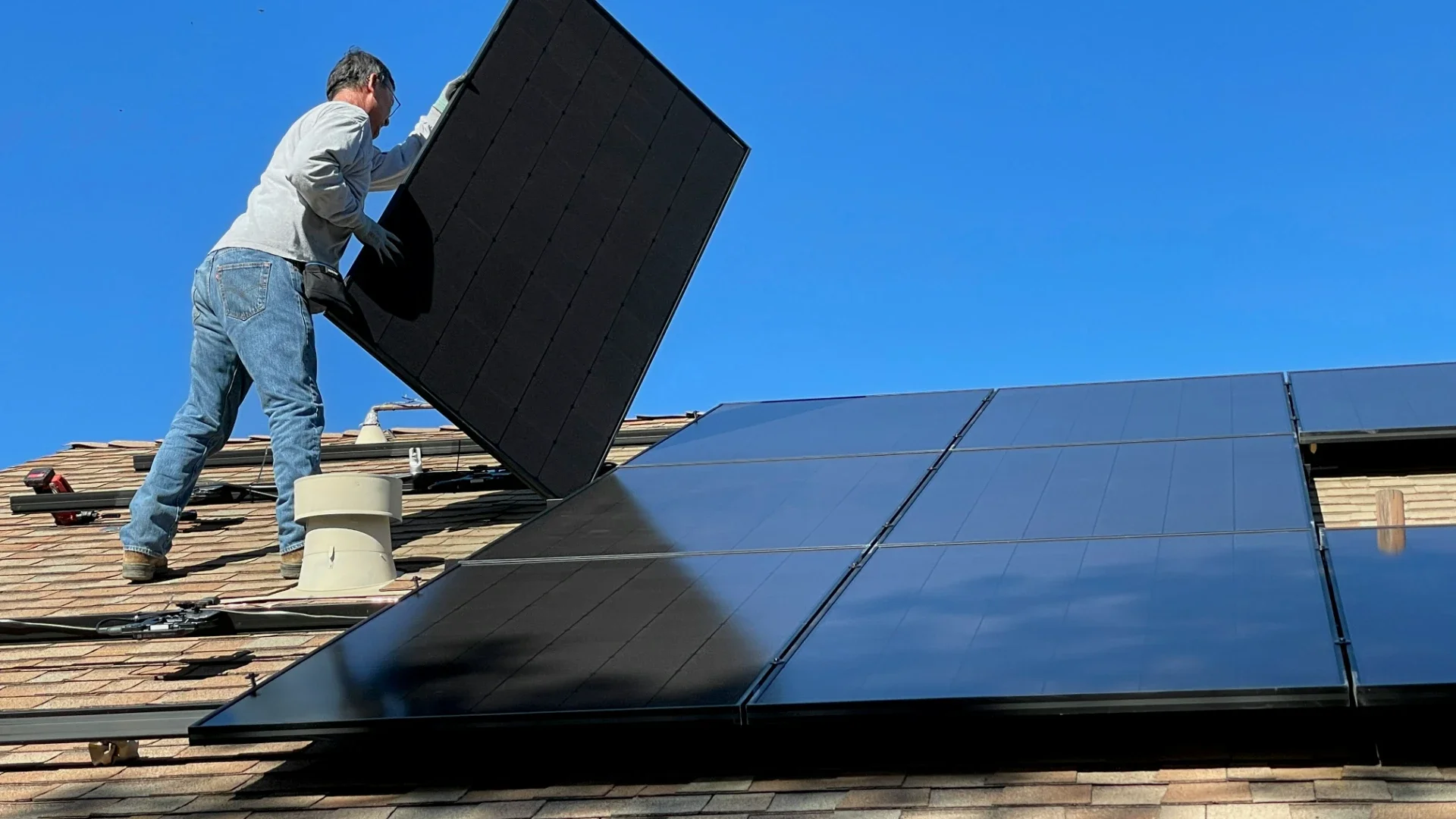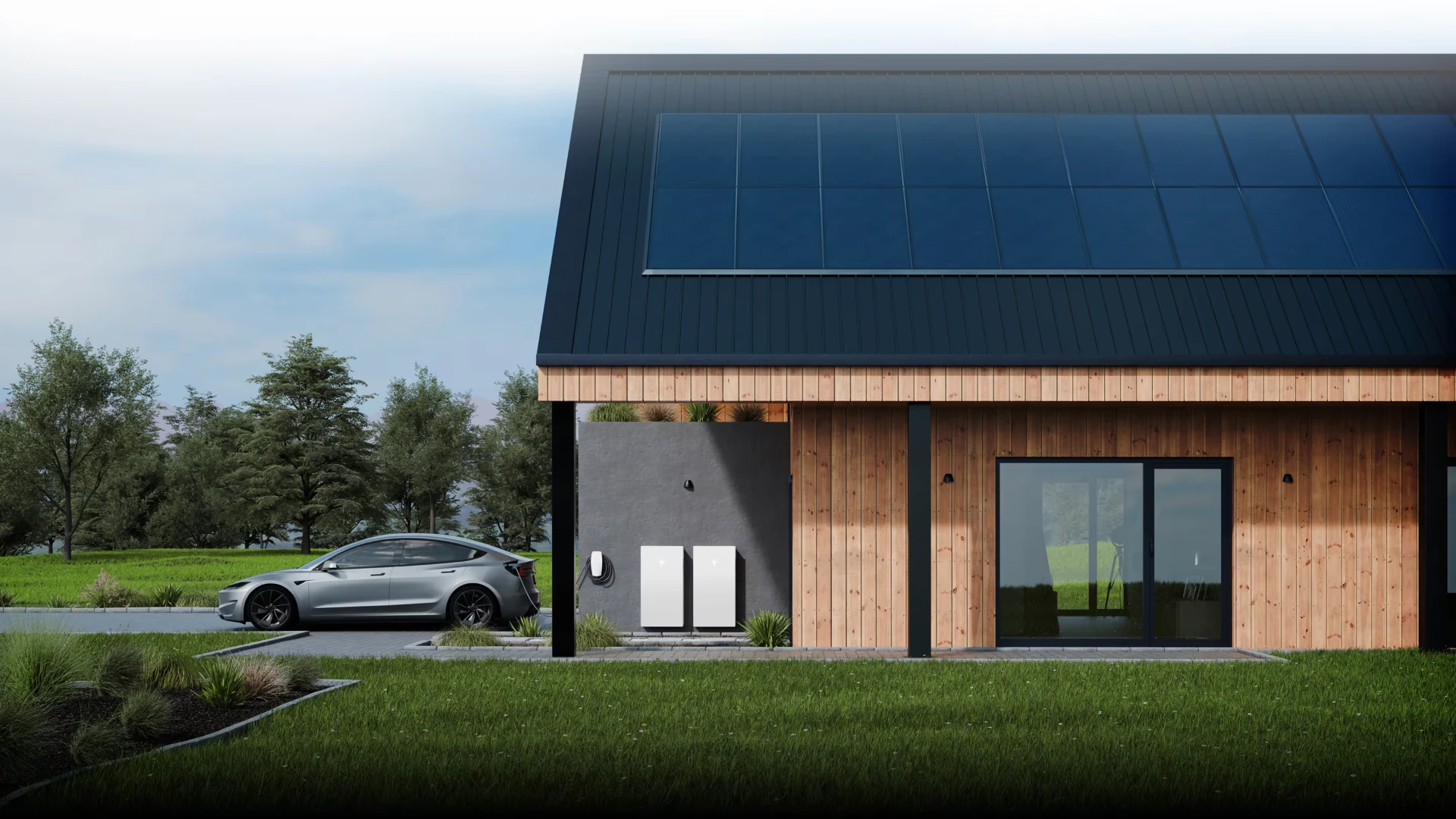
Tesla Solar Panels in 2025: Cost, Performance, Payback
- Jackson Whitmore
- Energy , Home improvement , Technology
- August 22, 2025
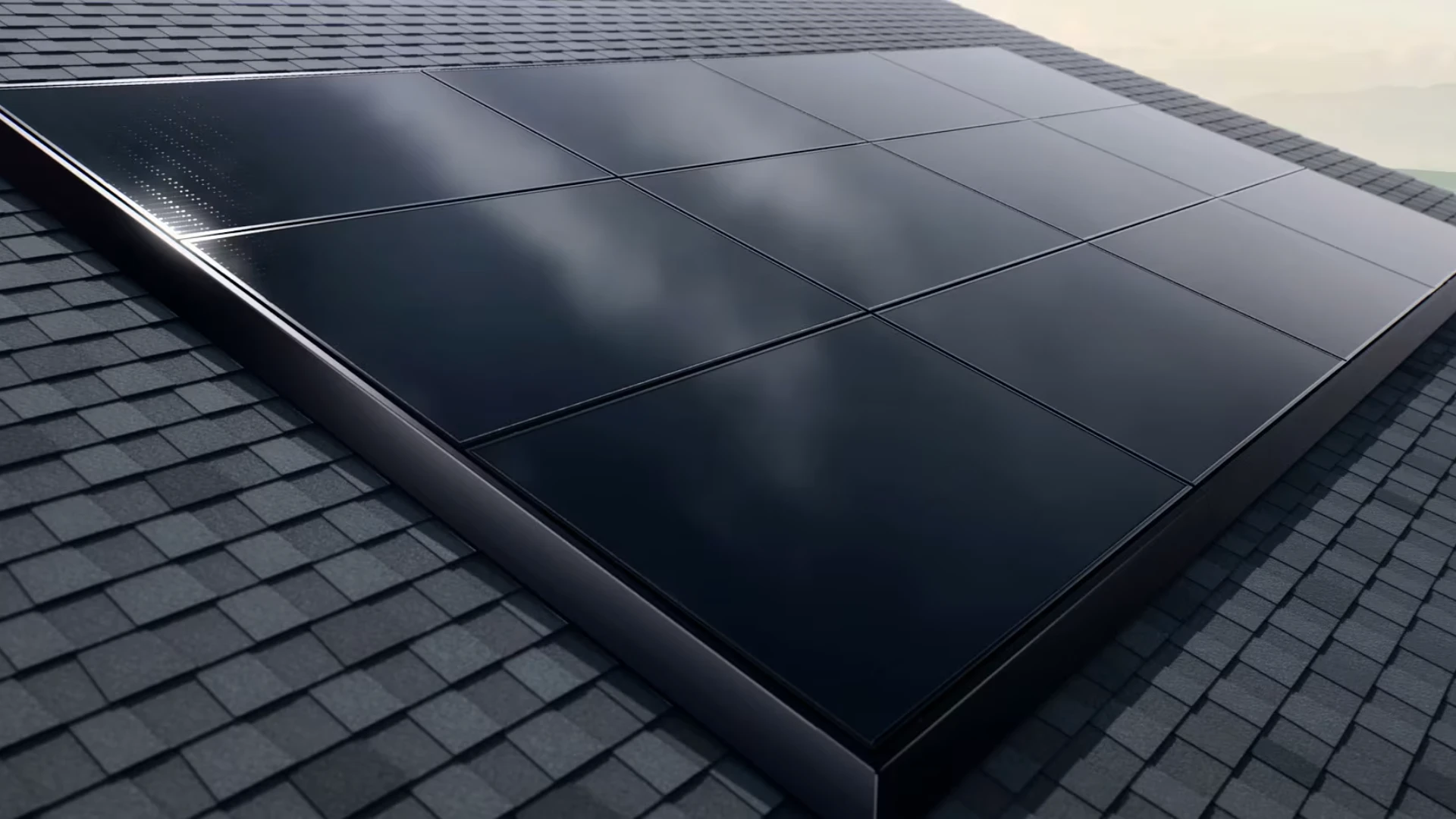
TL;DR
- Expect a price in the ballpark of $2.25–$3.25 per watt before incentives.
- Payback is often 7–12 years, depending on your utility rates and sun.
- Pros: clean look, transparent online pricing, great app, easy Powerwall add‑on.
- Cons: support can vary by region, less customization than some local installers.
- Good fit if you want simple, neat, and integrated. Compare at least one local quote.
What exactly are Tesla Solar Panels?
Short answer: they’re standard high-quality rooftop solar panels with a clean, low‑profile mounting system, paired with Tesla’s inverter and app. You can add a Powerwall battery now or later. Different from the Tesla Solar Roof (that’s a full roof replacement where the tiles make power).
What you actually get:
- Panels + racking (sleek, black, low‑profile)
- Tesla inverter (converts DC → AC)
- Gateway, monitoring, and the Tesla app
- Optional: Powerwall battery backup
Availability: Tesla operates in many U.S. states, but timelines and support depend on local crews and permitting.
The straight pros and cons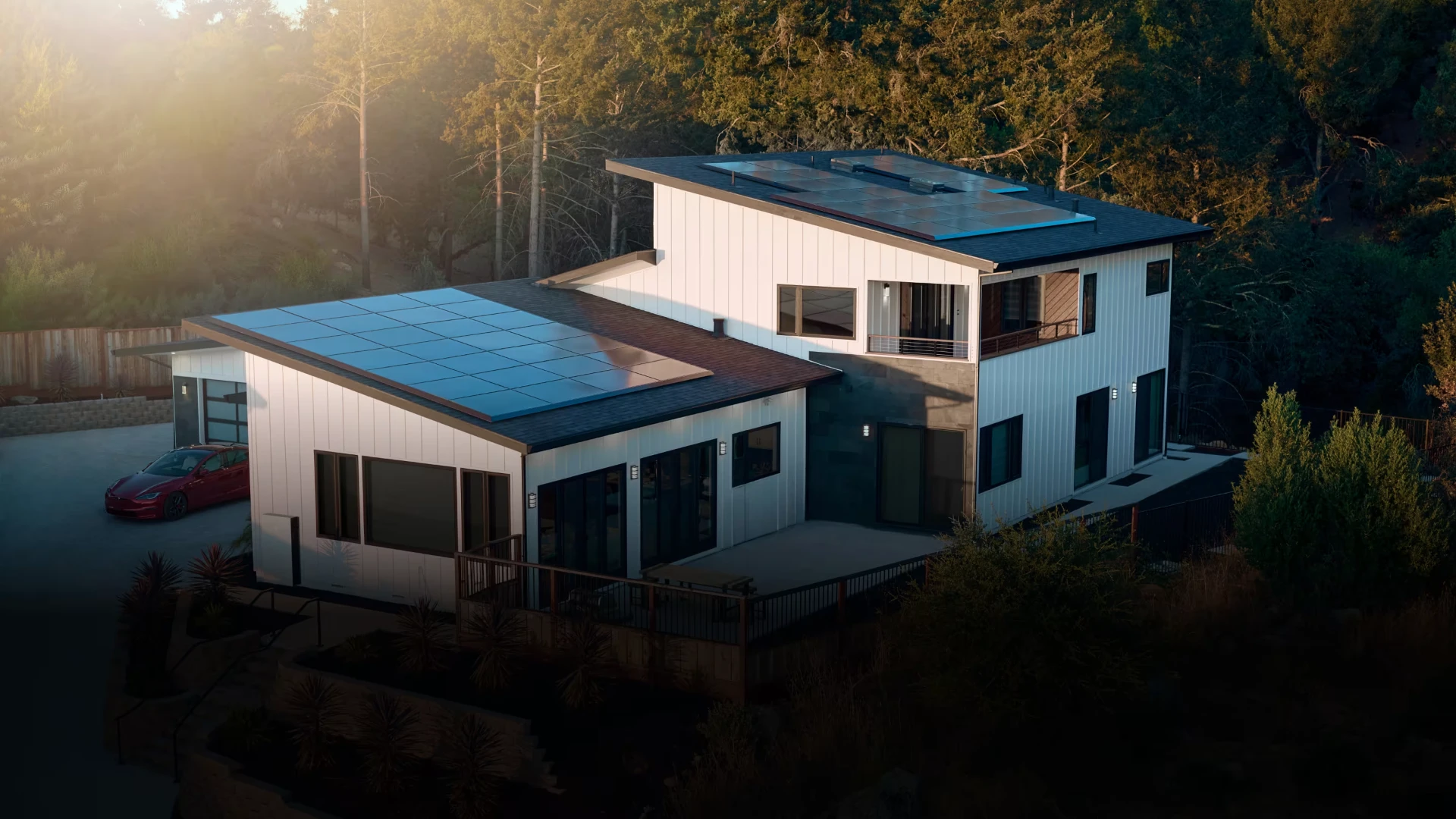
Pros
- Clean aesthetics that blend in
- Clear online pricing and a smooth quoting flow
- Solid app with production and usage insights
- Powerwall integrates cleanly with the system
Cons
- Communication and scheduling can vary by market
- Fewer panel brand/options versus boutique installers
- Local premium installers may beat lifetime value in some regions
Cost and Payback: Tesla Solar Panels Price per Watt (what you’ll likely pay and why)
Let’s keep it simple. Most homeowners see quotes in the $2.25–$3.25/W range before incentives. Your exact number moves with:
- Roof complexity (steepness, multiple planes, tile/metal)
- Main panel or service upgrades
- Distance runs, trenching, conduit
- Local permit and interconnection fees
Typical cost components (ballpark):
| Component | What it covers | Notes |
|---|---|---|
| Panels + Racking | Modules, mounting, roof attachments | Low‑profile hardware can add cost |
| Inverter | Tesla inverter + gateway | Sized to system; future replacement likely |
| BOS/Materials | Wiring, breakers, conduit, labels | Varies with run length/roof layout |
| Labor & Design | Site survey, engineering, installation | Market rates differ widely |
| Permits & Fees | AHJ permits, utility interconnection | Utility timelines drive schedule |
| Electrical Upgrades | Main panel/service upgrades | Only if needed; biggest swing item |
Quick napkin math example:
- 7 kW system × $2.80/W ≈ $19,600 before incentives
- Federal tax credit (30%): −$5,880
- Approx. net cost: ~$13,720
If your electricity is $0.22/kWh and the system makes ~9,800 kWh/year, that’s ~$2,156/year in avoided cost. Very rough payback: 6–8 years. Your numbers will vary with sun, shading, and rates.
Regional reality: Net metering vs export credits, time‑of‑use rates, and interconnection rules vary by state and utility. These can swing payback by years. Always compare quotes with your own rate plan and local policies.
Performance and efficiency (real‑world)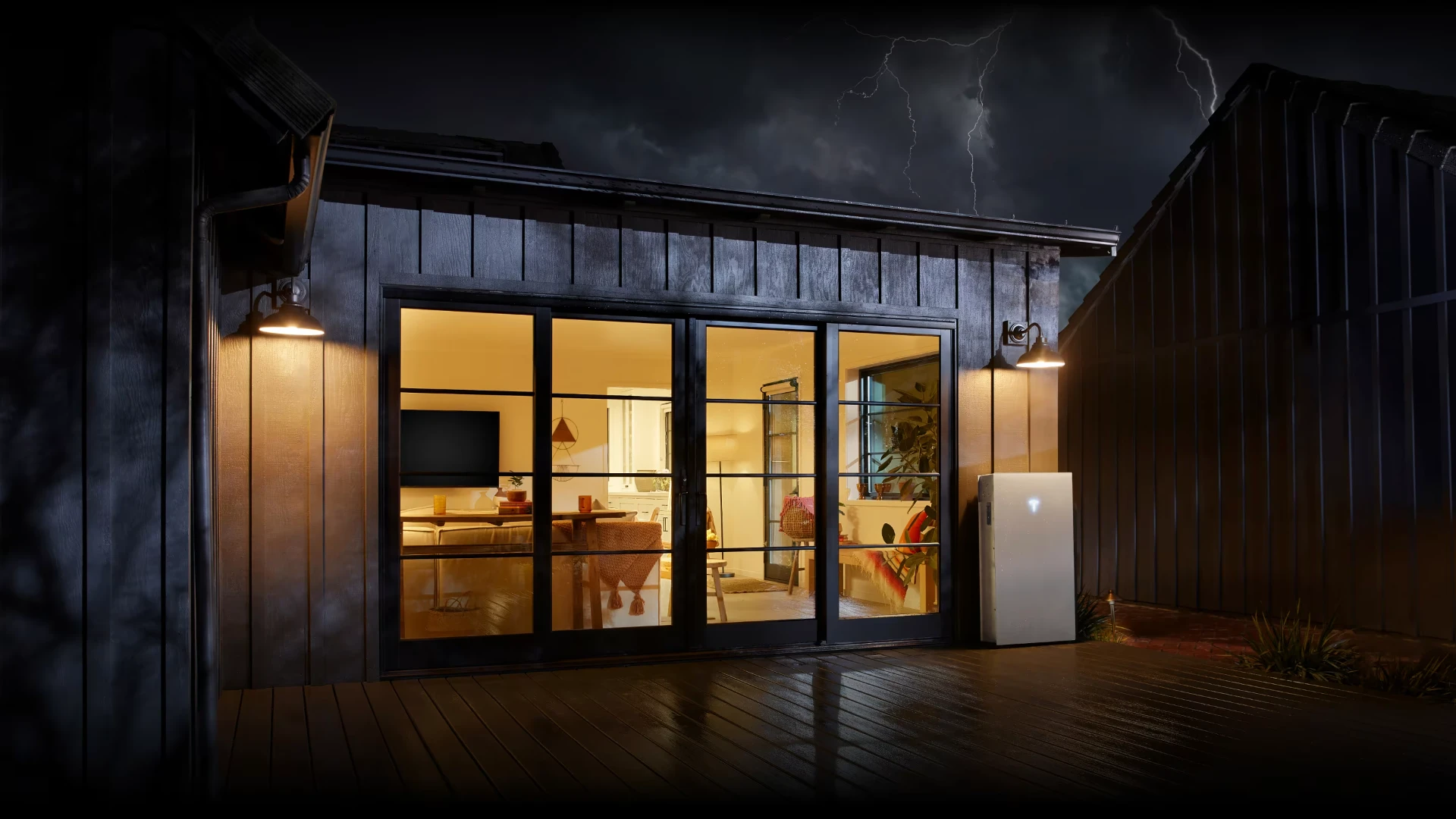
Panel efficiency is only part of the story. What matters day to day:
- Roof orientation and tilt
- Shade from trees, chimneys, and nearby buildings
- Local climate (cool and sunny is great; heat slightly reduces output)
- Inverter design and wiring
Tesla’s app makes this easy to watch. You’ll see production, usage, and grid import/export. Over time, you’ll learn which months are your power months, and which are quieter.
Degradation is normal. Most panels lose ~0.3–0.7% output per year. Over 25 years, you still get strong production if the system is designed well.
Hardware quick tour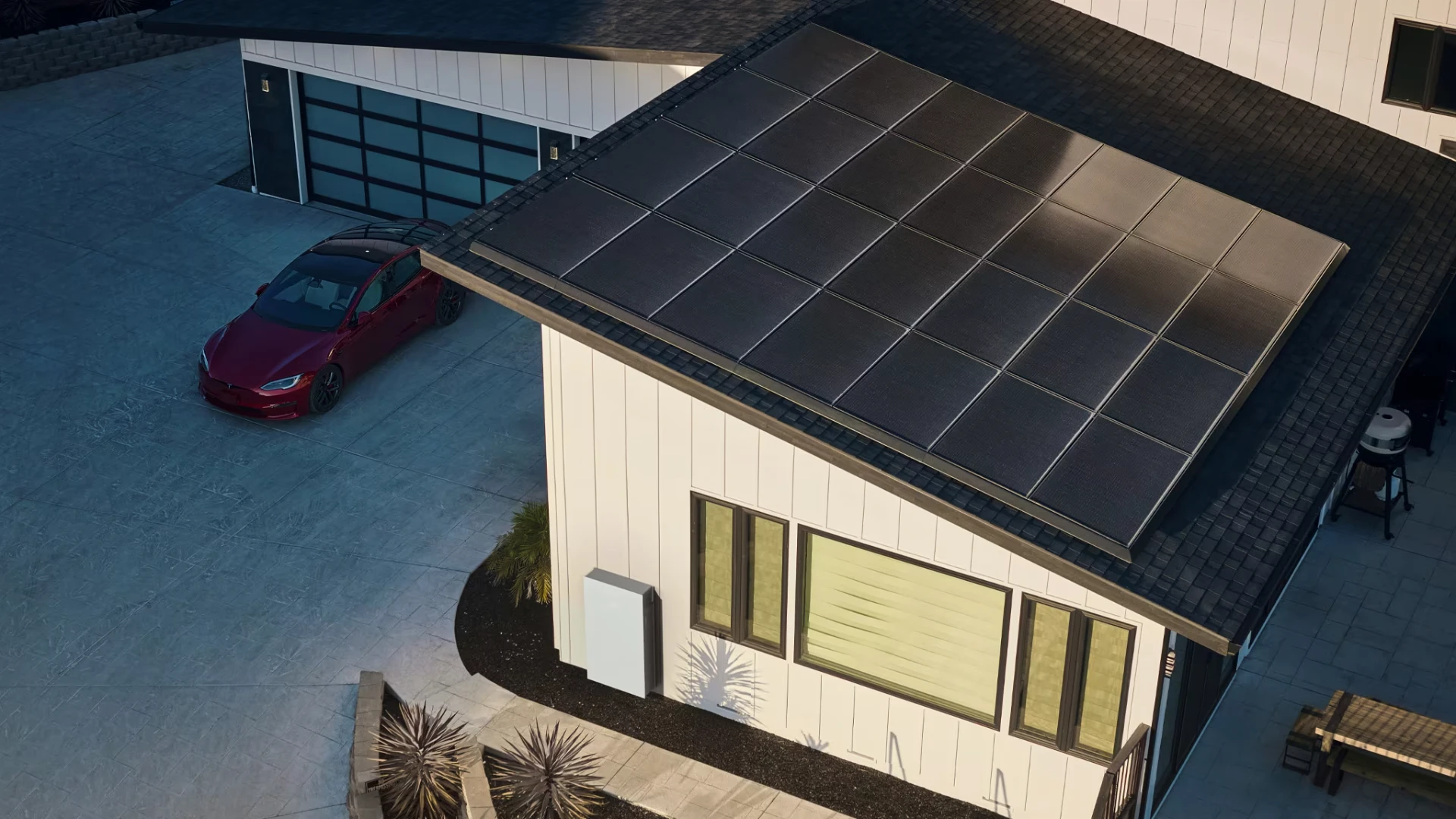
- Panels and racking: low‑profile, clean edges, black frames
- Tesla inverter: converts DC to household AC and talks to the app
- Powerwall (optional): backup during outages, time‑of‑use shifting, and potential VPP participation in supported markets
Powerwall basics: A home battery with ~13.5 kWh usable capacity per unit, about 5 kW continuous (up to ~7 kW peak) output. Typical installed price lands around $10,000–$15,000 before incentives, but varies by market, equipment, and labor. It stores daytime solar for nights and provides backup during outages.
When is Powerwall worth it?
- You get frequent outages and want whole‑home or critical loads backup
- Your utility has expensive evening rates (TOU) and you want to shift solar energy to nights
- Your area supports virtual power plants (VPP) and you want credits
Tesla Solar Panels Installation Timeline and Process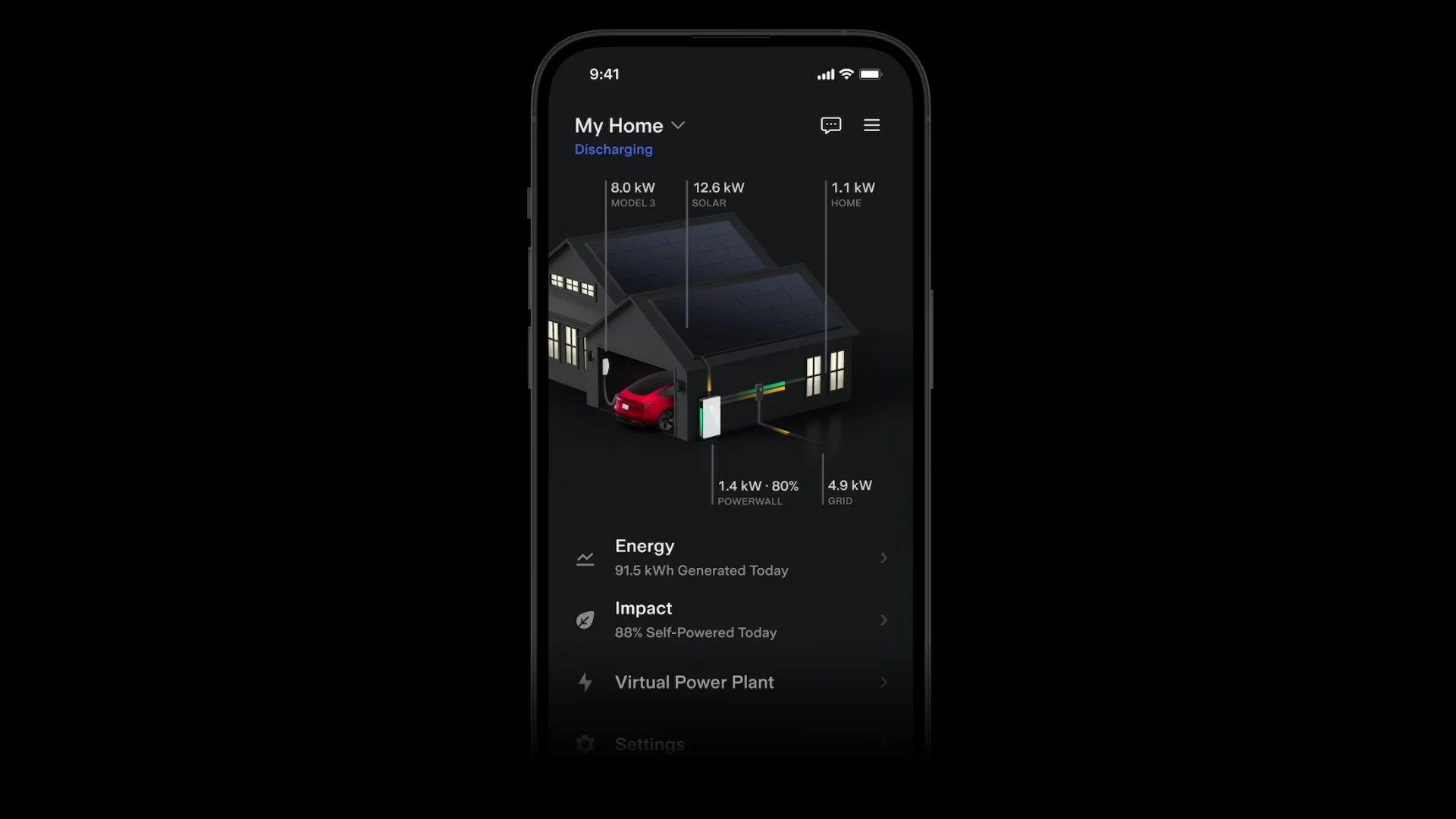
Here’s the usual flow:
- Online design and quote
- Site survey (virtual or in‑person)
- Final design, permits, utility forms
- Installation day (usually 1–2 days for a typical home)
- Inspection and PTO (permission to operate)
Total time can be 4–12 weeks. The long pole is usually permits and utility sign‑off, not the install day itself.
What to prep:
- Roof in good shape (ideally <10 years old or recently inspected)
- Solid Wi‑Fi near inverter/gateway location
- Space for equipment on a garage wall or near the main panel
Tesla Solar Warranty and Service
You’ll typically see three buckets of coverage:
- Product warranty for panels, inverter, and racking
- Performance warranty (assures a minimum output curve over 25 years)
- Workmanship warranty for the install itself
If you need service, open a request in the app. Photos and clear notes help speed things up.
Inverter replacement: Many homeowners plan for an inverter replacement once over a 25‑year life. A rough installed cost can land around $1,500–$3,000 depending on market and scope.
Tesla Solar Roof vs Tesla Solar Panels vs alternatives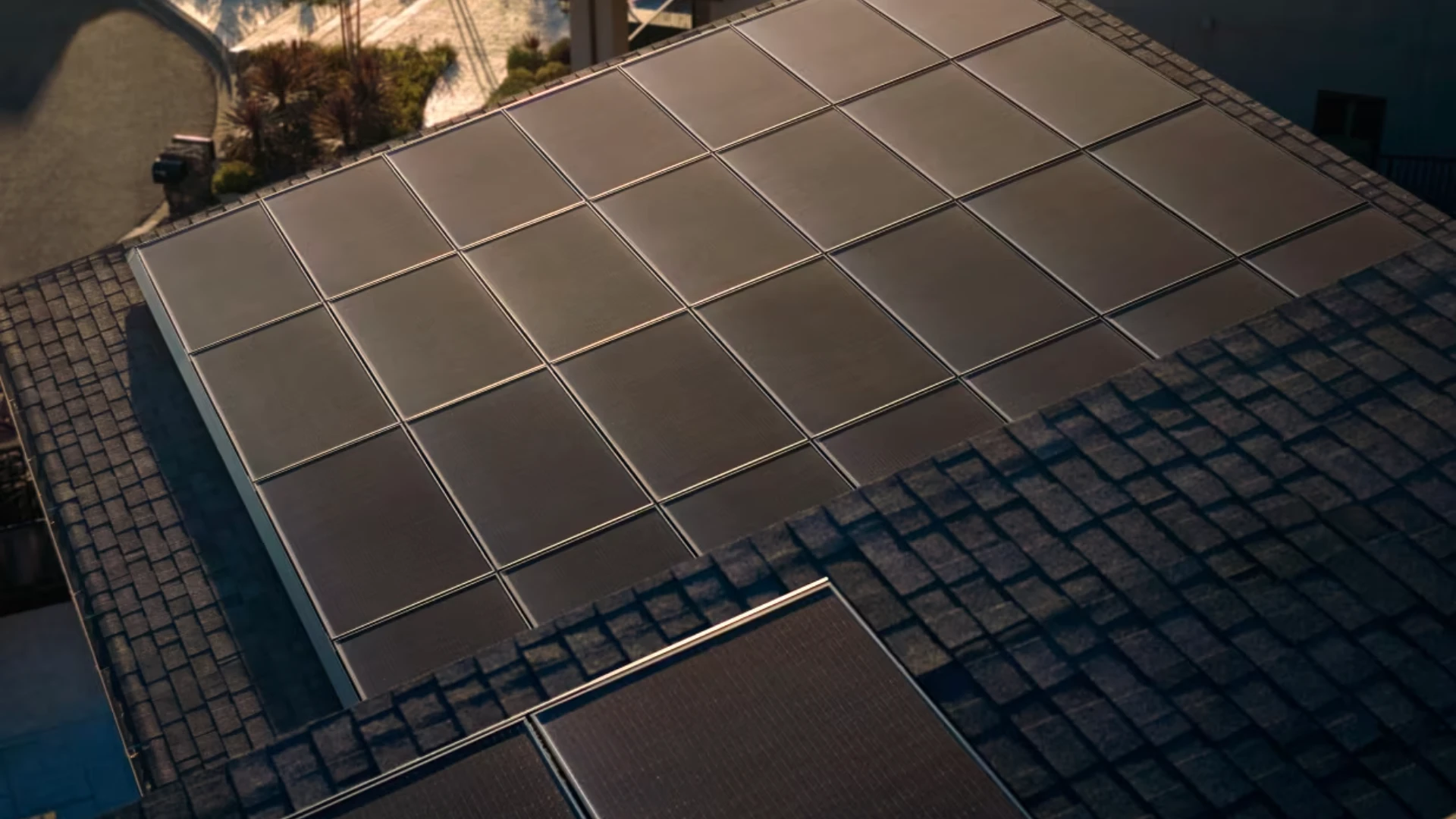
- Solar Roof makes sense if you already plan a roof replacement and care a lot about aesthetics. It’s gorgeous, but it’s a bigger project.
- Tesla Solar Panels get you most of the value for less cost and less fuss.
- Alternatives: premium brands (SunPower, REC, Qcells) via local installers can offer different hardware and sometimes better local support. Prices vary. Ask for a line‑item quote and a production estimate you can compare apples‑to‑apples.
Total cost of ownership matters more than sticker price. Consider lifetime production, warranties, and how fast you can get service.
Incentives, net metering, and your utility plan
- U.S. federal solar tax credit is 30% for eligible systems
- States and utilities may add rebates or credits
- Net metering or export credits affect payback a lot
- Watch your rate plan (time‑of‑use can reward batteries and daytime load shifting)
Check your state energy office or DSIRE for exact incentives. Your installer should include them in the quote. For a broader primer, see our Solar Panels for Home: A Complete No‑BS Guide .
Is Tesla right for you? Quick checklist
- You want clean aesthetics and a simple process
- Your roof has good sun and minimal shade
- You like the Tesla app and plan to add Powerwall now or later
- You’re fine with fewer hardware choices in exchange for a streamlined setup
- You’ll compare at least one local installer bid before you sign
Frequently Asked Questions (FAQs) About Tesla Solar Panels
Q1: How much can a Powerwall store, and what does it cost?
- A1: About 13.5 kWh usable per unit. Around ~5 kW continuous output (~7 kW peak). Typical installed price is ~$10,000–$15,000 before incentives and varies by market and scope. Multiple units add storage and power; many homes use one or two depending on backup needs.
Q2: How many Powerwalls do I need?
- A2: For essential loads (fridge, lights, Wi‑Fi, a few circuits), one unit often works. For whole‑home backup or larger loads (AC, well pump), plan on two or more. Your installer can model your specific loads and outage goals.
Q3: How long do Tesla panels last?
- A3: Panels are designed for decades. Expect useful life beyond the 25‑year performance warranty with gradual output degradation.
Q4: Can I add Powerwall later?
- A4: Yes. Plan wall space and conduit during the solar install to simplify a future add‑on.
Q5: Can I expand my solar system later?
- A5: Often, yes—if you have roof space, electrical capacity, and your utility allows it. Additional permits/interconnection updates may be needed. Adding batteries later is usually simpler than adding more roof capacity.
Q6: What happens in an outage without a Powerwall?
- A6: The system shuts down for safety (anti‑islanding). A battery is required for backup.
Q7: How long does installation take?
- A7: Install day is usually 1–2 days. The full timeline including permits, utility approval, and inspection is commonly 4–12 weeks, varying by jurisdiction and utility.
Q8: Will panels damage my roof?
- A8: Proper installation uses flashed, sealed attachments to protect the roof. A pre‑install roof check is recommended.
Q9: Do I get net metering credits?
- A9: It depends on your utility and state. Some offer net metering, others credit exports at set rates (net billing). This can change payback significantly—check your rate plan and local policies.
Q10: Will I need to replace the inverter?
- A10: Many homeowners plan for one inverter replacement over ~25 years. A rough installed cost can land around $1,500–$3,000 depending on market and scope.
Bottom line
This is a balanced Tesla solar review: If you want neat aesthetics, a solid app, and easy battery integration, Tesla Solar Panels are a strong pick. If you want maximum hardware choice or white‑glove local service, add a trusted local installer to your comparison. Either way, solar is one of the few home upgrades that can pay for itself — and then some.
Next step: Get a Tesla online quote and compare it with at least one local installer bid. Use your actual bill data and rate plan for a realistic payback.
Start here if you’re brand‑new to solar: Solar Panels for Home: A Complete No‑BS Guide
Also Read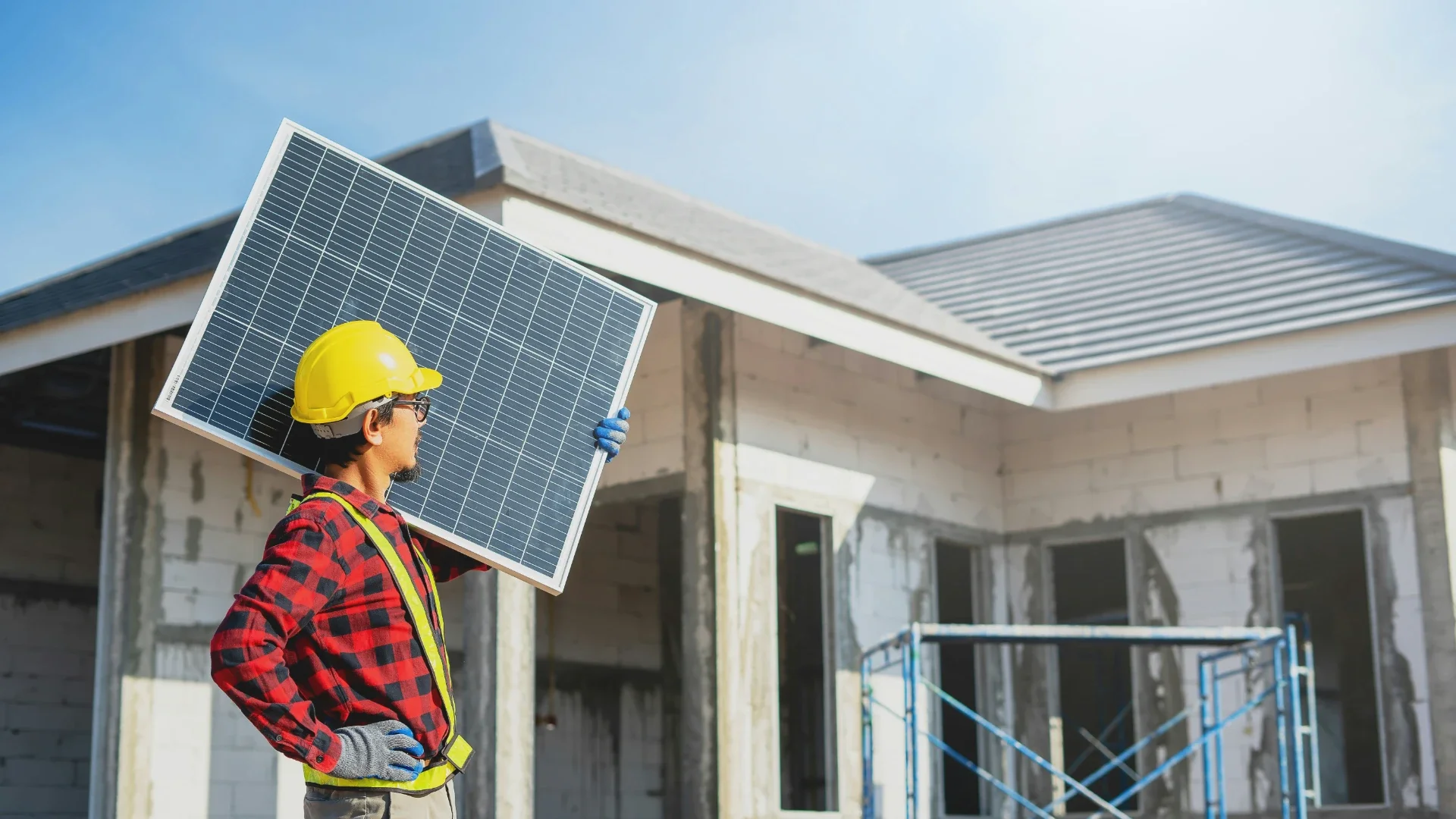
If you’re interested in other sustainable tech and home improvements, check out these articles:
- MAMMOTION LUBA 2 AWD Robotic Lawn Mower Review - Automate your lawn care for a truly smart home experience.
- A Complete Guide to Electrify America Charging Stations - Learn about EV charging infrastructure that complements your sustainable lifestyle.
- Ulefone Armor 33 Pro: The Ultimate Rugged Phone for Outdoor Adventures - A rugged phone built for those who love the outdoors, potentially relevant for off-grid power solutions.


